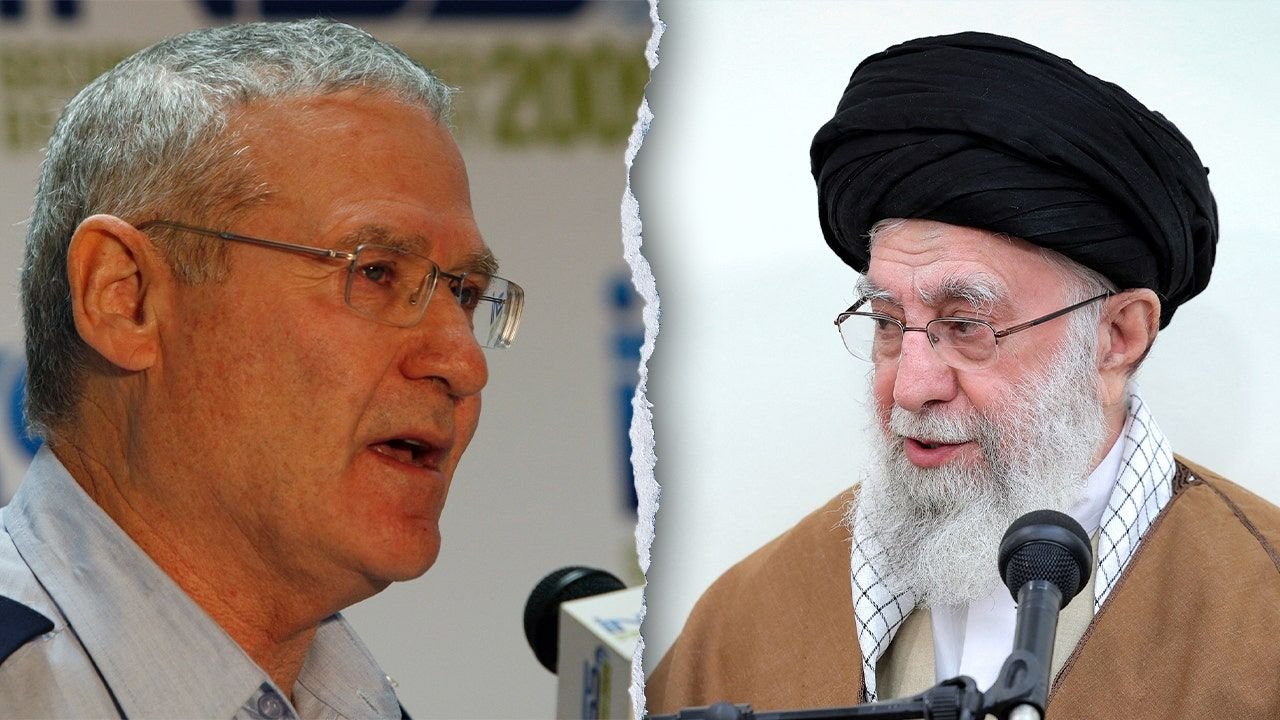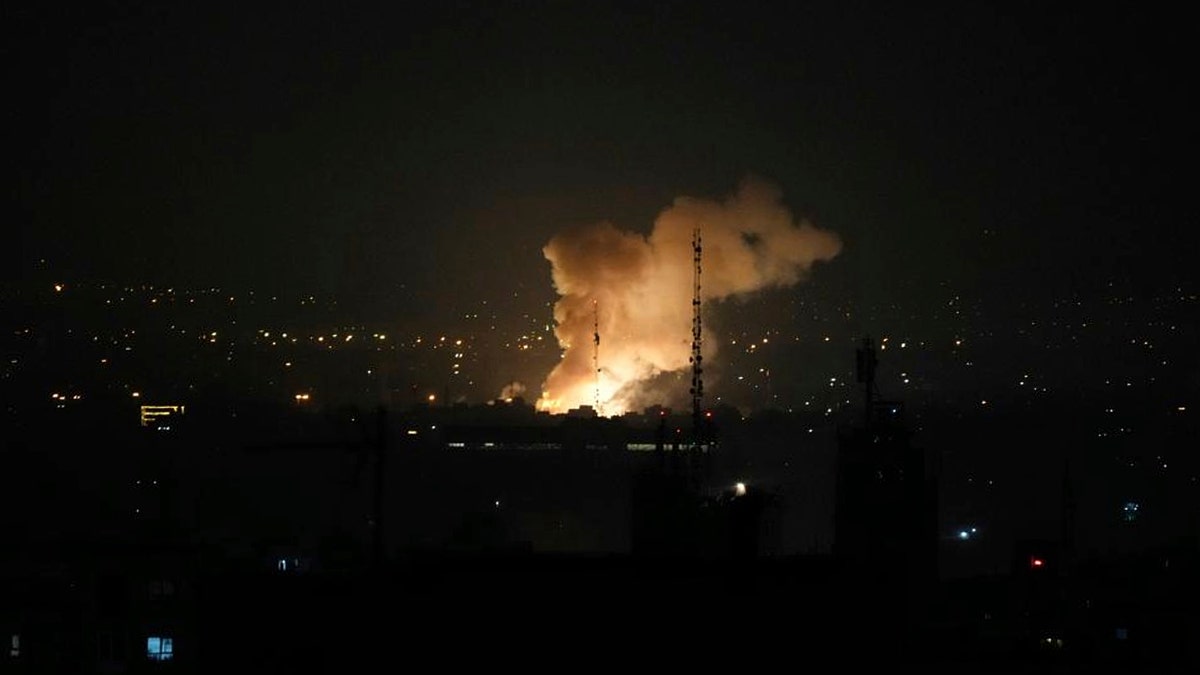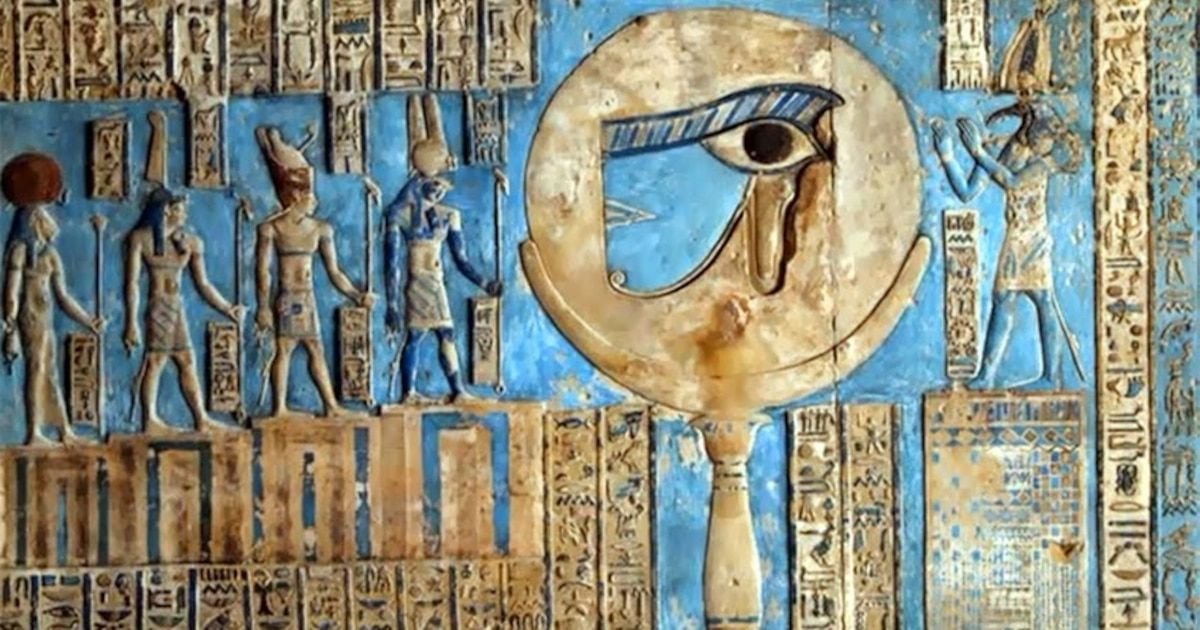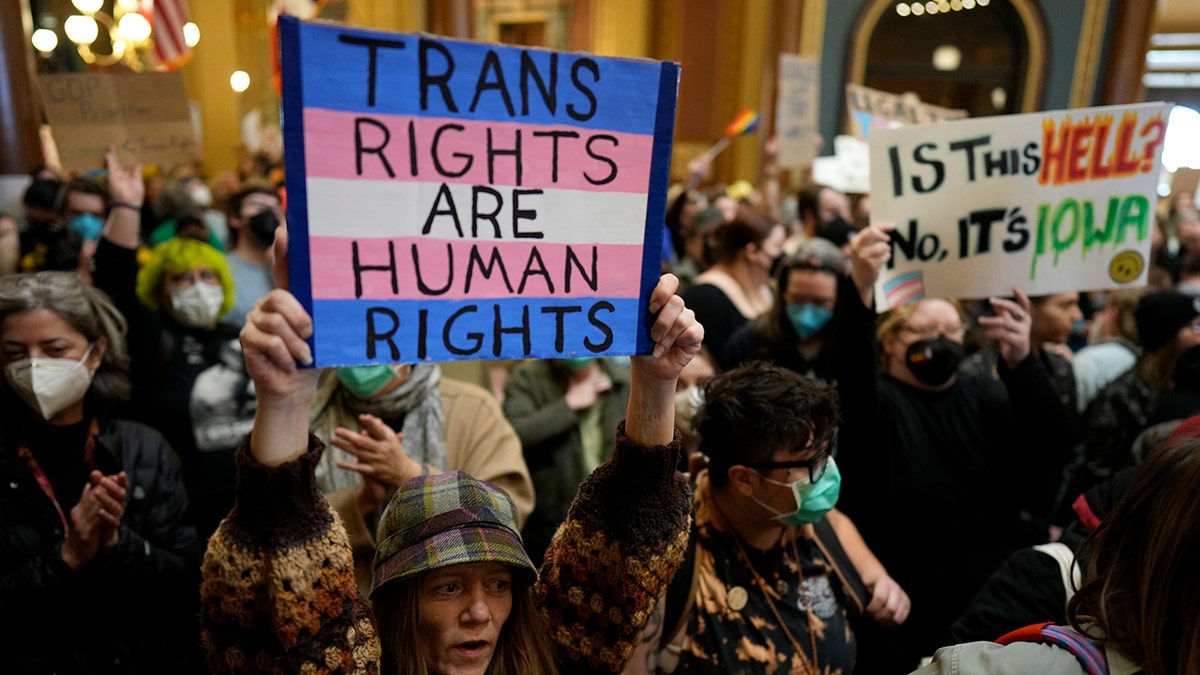INTERNACIONAL
Time for Israel to take out ‘head of the snake,’ target members of Iranian regime, says former IDF intel chief

NEWYou can now listen to Fox News articles!
Israel’s ongoing military campaign on Iran’s nuclear infrastructure could mark not just a military escalation but a strategic shift, according to retired Maj. Gen. Amos Yadlin.
The former head of Israeli military intelligence and one of the architects behind the legendary 1981 strike on Iraq’s Osirak nuclear reactor said Israel should expand its sights not just military targets, but political ones.
«Israel took the decision that, on one hand, it’s time to end the leadership of the Axis of Evil — the head of the snake,» Yadlin told Fox News Digital. «At the same time, deal with the main problems there. Which is the nuclear.»
Yadlin didn’t say how long he thought the conflict would drag on. While he didn’t openly call for regime change, Yadlin suggested the IDF take out regime targets «beyond the military level.»
«It’s not a one-day operation. It seems more like a week, two weeks. But when you start a war, even if you start it very successfully, you never know when it is finished.»
IRAN THREATENS TO HIT US BASES IN THE MIDDLE EAST: WHAT IS THE THREAT LEVEL?
«I hope that the achievements of the IDF, which are degrading the Iranian air defense, degrading the Iranian missile, ballistic missile capabilities, drones capabilities, and maybe even some regime targets beyond the military level that Israel started with, will convince the Iranians that it is time to stop. And then they will come to negotiation with the Trump administration much weaker.»
«Israel took the decision that on one hand it’s time to end the leadership of the Axis of Evil — the head of the snake,» Yadlin told Fox News Digital. «At the same time, deal with the main problems there. Which is the nuclear.» (Reuters/Gil Cohen Magen)
While Secretary of State Marco Rubio initially insisted it was not involved in the initial strikes on Tehran, President Donald Trump seemed to suggest he hoped Israel’s strikes would pressure a weaker Iran to acquiesce at the negotiating table.
The two sides are at loggerheads over the U.S.’s insistence that Iran cannot have any capacity to enrich uranium and Iran’s insistence that it must have uranium for a civil nuclear program.
«The military operation is aimed, in my view, to a political end, and the political end is an agreement with Iran that will block a possibility to go to the border,» Yadlin said.
«We need a stronger agreement» than the 2015 Joint Comprehensive Plan of Action, he said.
INSIDE ISRAEL’S SECRET WAR IN IRAN: MOSSAD COMMANDOS, HIDDEN DRONES AND THE STRIKE THAT STUNNED TEHRAN
Yadlin, who in 1981 flew one of the F-16s that destroyed Iraq’s nuclear facility in a single-night operation, made clear that Israel’s latest campaign is far more complex.
«This is not 1981,» he said. «Iran has learned. Their facilities are dispersed, buried in mountains, and protected by advanced air defenses. It’s not a one-night operation.»
He added, «There are sites that I’m not sure can be destroyed.»
He said the recent attack was the result of years of intelligence gathering – and brave Mossad agents on the ground in Iran. Israel lured top Iranian commanders into a bunker, where they coordinated a response to Israel’s attacks, then blew up the bunker.
«All of the intelligence that Israel collected, from the time I was chief of intelligence 2005 to 2010, enabled this operation against the Iranian nuclear program to be very efficient, very much like the good intelligence enabled Israel to destroy Hezbollah. Unfortunately, the same intelligence agencies missed the seventh of October, 2023.»

A rescue personnel holds Tess, a dog rescued from a building hit by Iran’s counterstrike on Israel on Saturday ( Reuters/Ronen Zvulun)
Indeed, Israel’s past preventive strikes — 1981’s Operation Opera and the 2007 airstrike on Syria’s suspected reactor — were rapid, surgical and designed to neutralize a singular target. In contrast, Yadlin suggested the current campaign could last weeks and involve broader goals.
«It’s not a one-day operation. It seems more like a week, two weeks. But when you start a war, even if you start it very successfully, you never know when it is finished.»
The operation is being framed by Israeli defense officials as a continuation of the Begin Doctrine, established after the 1981 Osirak strike, which declared that Israel would never allow a hostile regime in the region to obtain weapons of mass destruction.

Smoke rises after an explosion in Tehran, Iran, Friday, June 13, 2025, the first wave of Israeli attacks to take out the nuclear program.
Yadlin himself is a symbol of that doctrine. As one of the eight pilots who flew into Iraq over four decades ago, he helped define Israel’s policy of preemptive action — a legacy that is now being tested again under radically different circumstances.
CLICK HERE TO GET THE FOX NEWS APP
«This campaign,» Yadlin emphasized, «is unlike anything the country has done before.»
INTERNACIONAL
Tras 5 mil años, el mítico “azul egipcio”, el pigmento más antiguo del mundo, vuelve a la vida

El pigmento azul artificial que fascinó a civilizaciones antiguas no solo sirvió para embellecer templos y objetos, sino que también podría tener aplicaciones tecnológicas en la actualidad gracias a sus propiedades ópticas, magnéticas y biológicas. Según consignó Smithsonian Magazine, un equipo de científicos ha logrado recrear el pigmento egipcio azul, el más antiguo del mundo, utilizando técnicas modernas de análisis y replicando los métodos de fabricación empleados hace más de 5.000 años.
El estudio, publicado en la revista NPJ Heritage Science, fue liderado por John S. McCloy, profesor en la escuela de ingeniería mecánica y de materiales de la Washington State University en Pullman, y Edward P. Vicenzi, científico del Smithsonian Institution’s Museum Conservation Institute en Suitland, Maryland. La investigación se realizó en colaboración con el Carnegie Museum of Natural History de Pittsburgh, que solicitó a los expertos la producción de materiales para una exhibición sobre el antiguo Egipto.
El pigmento, conocido como azul egipcio, se utilizó desde el año 3100 a.C. para decorar madera, piedra, cartón piedra, cuentas y amuletos, y su coloración abarca desde un azul intenso hasta tonos grisáceos o verdosos.

El azul egipcio, denominado en la lengua original hsbd-iryt o “lapislázuli artificial”, permitió a los artistas de la antigüedad crear objetos azules en toda la región mediterránea, algo que no era posible con piedras como la turquesa o el lapislázuli, que solo podían tallarse o usarse como incrustaciones. Así, el pigmento se empleó durante milenios como sustituto de materiales costosos como el índigo, importado desde la India, o el propio lapislázuli, traído desde zonas tan lejanas como el actual Afganistán. Filósofos y naturalistas de la antigüedad, como Teofrasto y Plinio el Viejo, documentaron las variedades y usos del pigmento en sus escritos.
La investigación reciente se distingue de estudios previos porque el equipo utilizó técnicas de microscopía y análisis de última generación, como análisis térmico, difracción de rayos X en polvo con refinamiento Rietveld, espectroscopía Raman láser, mediciones de fotoluminiscencia e imágenes de luminiscencia inducida por luz visible.
Los investigadores sometieron a hornos a temperaturas de aproximadamente 1.000 grados Celsius (1.800 grados Fahrenheit) una docena de combinaciones de materiales, entre ellos dióxido de silicio cristalino, óxidos y carbonatos de cobre como la azurita y la malaquita, fuentes de calcio y, en algunas recetas, carbonato de sodio.

Al comparar los pigmentos obtenidos con artefactos egipcios auténticos de la colección del Carnegie Museum, los científicos observaron que incluso los tonos más azules requerían solo un 50% de componentes de color azul. “No importa qué sea el resto de la mezcla, lo cual nos sorprendió bastante”, explicó McCloy en declaraciones recogidas por Smithsonian Magazine. “Cada partícula de pigmento contiene una variedad de materiales; no es uniforme en absoluto”.
El interés por el azul egipcio no se limita a su valor histórico o artístico. Según explicó McCloy, el pigmento emite luz en el rango del infrarrojo cercano, invisible para el ojo humano, lo que abre la puerta a aplicaciones como la detección de huellas dactilares y la creación de tintas imposibles de falsificar. Además, su composición química guarda similitudes con la de los superconductores de alta temperatura, lo que podría inspirar desarrollos en el ámbito de la ciencia de materiales.

La iniciativa de recrear el pigmento surgió a partir de una solicitud del Carnegie Museum of Natural History para exhibir materiales en una muestra sobre el antiguo Egipto. McCloy, quien además de su labor como profesor en ingeniería de materiales posee una maestría en antropología, relató que el proyecto comenzó como una tarea lúdica, pero pronto atrajo la atención de la comunidad científica y del público general. “Esperamos que este trabajo sirva como un buen ejemplo de lo que la ciencia puede aportar al estudio de nuestro pasado humano”, afirmó el investigador.
El pigmento azul egipcio dejó de utilizarse tras la caída del Imperio Romano y, para la época del Renacimiento, la receta original se había perdido casi por completo. A pesar de que existen al menos ocho estudios previos sobre el tema, la investigación actual aporta una perspectiva novedosa gracias a la aplicación de métodos analíticos avanzados y a la comparación directa con piezas arqueológicas.
INTERNACIONAL
Dems ‘deliberately obfuscating’ truth about ‘big, beautiful bill’ with this claim: Watchdog

NEWYou can now listen to Fox News articles!
After House Republicans passed reconciliation language banning taxpayer funds from paying for sex change treatments, Democrats began using language to drum up opposition that conservative watchdog group the American Principles Project says is meant «to confuse people and make it sound like we’re trying to ban normal healthcare, medically necessary healthcare.»
The House-passed version of the One Big Beautiful Bill Act includes provisions that prohibit federal Medicaid and Affordable Care Act funding from being spent on «gender transition procedures for any age» in all 50 states.
In response, Democrats and left-wing groups have begun claiming the GOP’s spending package seeks to eliminate «medically-necessary care.»
However, according to APP President Terry Schilling, «it’s a lie» and an effort to combat the prevailing notion among Americans that taxpayer funds should not be paying for transgender procedures.
‘RIGHT DOWN THE LINE’: MEDICAID REFORM IN ‘BIG, BEAUTIFUL BILL’ DIVIDES LAWMAKERS BY PARTY
«They’re deliberately obfuscating here, and it’s because they don’t have any good arguments,» Schilling told Fox News Digital. «We shouldn’t be paying for any cosmetic sex change procedures with our tax dollars, and that’s what we’re cutting here.
«But they’re introducing and now ramping up these highly weaponized and high-powered words to confuse people and make it sound like we’re trying to ban normal healthcare, medically necessary healthcare.»
A transgender activist poses for a photograph after a rally where hundreds gathered in support of transgender youth at the Utah State Capitol in 2023. (Rick Bowmer)
After Republicans in the House of Representatives passed their version of the GOP spending package last month, the Congressional Equality Caucus complained that «Congress should be working to make healthcare more affordable – not banning coverage of medically necessary care.»
«House Republicans changed a previous anti-trans provision so it now cuts off federal Medicaid and Affordable Care Act funding for medically-necessary care for ALL transgender people — no matter their age,» a press release from the pro-trans Human Rights Campaign said after the House passed its spending bill.
GOP RAILS AGAINST ‘BLATANTLY FALSE’ DEM CLAIMS ABOUT MEDICAID REFORM IN TRUMP’S ‘BIG, BEAUTIFUL BILL’

Debate heats up over a bill prohibiting Medicaid and ACA funding for gender transition as conservatives and progressives clash on «medically necessary care.» (Getty Images)
According to APP’s Schilling, arguments that Republicans are taking away «medically necessary» healthcare from anyone are «just not true.»
To make his point, APP’s Schilling pointed to one of the left’s frequent sources for transgender medical recommendations, the World Professional Association for Transgender Health (WPATH). Schilling pointed out that WPATH’s guidelines and standards explicitly state there is no «one-size-fits-all approach» to treating individuals with gender dysphoria.
«These are not medically necessary [treatments]. It’s a lie. These are cosmetic,» Schilling argued. «If you look at WPATH, even according to their own standards, transgender-identifying people don’t actually have to medically transition. They say there’s no one size fits all. Well, I’m sorry, but medically necessary means you need it in order to survive. You need it for your health. And they’re saying in their own writings that it’s not medically necessary, that it’s not a one-size-fits-all.»
Schilling added that they’re «arguing out of both sides of their mouth.»
«We’re calling out the transgender industry, and we’re trying to stop them from confusing even more people as we pass a very, very good and important bill,» he said.
FIRST-KNOWN PUBERTY BLOCKER PATIENT SAYS ‘INSULTING’ YOUTH GENDER MOVEMENT MAKES MOCKERY OF TRUE DYSPHORIA
In a statement to Fox News Digital, the Human Rights Campaign argued «gender-affirming care» is considered «best practice» and «evidence-based» by every major medical association in the country, noting that studies have shown it significantly improves mental health outcomes for transgender youth.
«Healthcare decisions should be made by patients, families, and doctors — not the American Principles Project,» HRC said.

Protesters fill the Iowa Capitol to denounce a bill that would strip the state civil rights code of protections based on gender identity Feb. 27, 2025, in Des Moines, Iowa. (AP Photo/Charlie Neibergall)
Schilling said he has run numerous polls and focus groups about whether Americans agree with taxpayer funds supporting individuals’ gender transitions, and he told Fox News Digital that the overwhelming sentiment from people across the political spectrum is that they should not.
CLICK HERE TO GET THE FOX NEWS APP
«Here’s where Americans are at,» Schilling said. «They want to ban the procedures for anyone under 18. And, anyone over 18, they want you to pay for it yourself. That’s where they’re at, and that’s where [APP is] at, and that’s where Donald Trump is at. That’s where Republicans in the House and Senate are at.»
The Congressional Equality Caucus did not respond to requests for comment on this article.
INTERNACIONAL
Murió la nicaragüense Violeta Chamorro, la primera mujer en ser elegida presidenta en América

El matrimonio, ruptura con el sandinismo y la presidencia: «Voto, Violeta, Victoria»
Nicaragua,Últimas Noticias
-

 POLITICA2 días ago
POLITICA2 días agoCondena a Cristina Kirchner: hasta cuándo durarán las tomas en la UBA en contra del fallo
-

 SOCIEDAD3 días ago
SOCIEDAD3 días agoCómo son las tomas con pernocte en los colegios Carlos Pellegrini y Nacional Buenos Aires
-

 ECONOMIA3 días ago
ECONOMIA3 días agoLa inflación de mayo fue del 1,5%, la más baja en cinco años: qué espera la City para junio



















